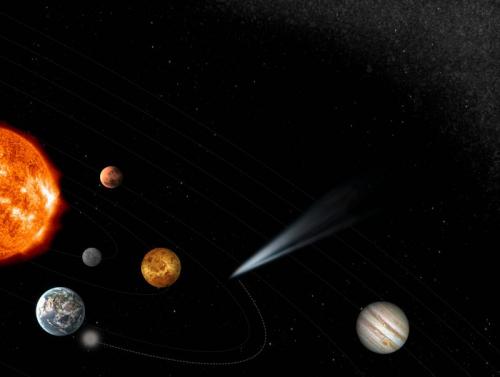‘Comet Interceptor’ has been selected as ESA’s new fast-class mission in its Cosmic Vision Programme. Comprising three spacecraft, it will be the first to visit a truly pristine comet or other interstellar object that is only just starting its journey into the inner Solar System. As with Rosetta, the Royal Belgian Institute for Space Aeronomy (BIRA-IASB) will also play an important role in this comet mission. The launch is foreseen at the earliest in 2027.
The mission will travel to an as-yet undiscovered comet, making a flyby of the chosen target when it is on the approach to Earth’s orbit. Its three spacecraft will perform simultaneous observations from multiple points around the comet, creating a 3D profile of a ‘dynamically new’ object that contains unprocessed material surviving from the dawn of the Solar System.
“Pristine or dynamically new comets are entirely uncharted and make compelling targets for close-range spacecraft exploration to better understand the diversity and evolution of comets,” says Günther Hasinger, ESA’s Director of Science.
“The huge scientific achievements of Giotto and Rosetta – our legacy missions to comets – are unrivalled, but now it is time to build upon their successes and visit a pristine comet, or be ready for the next ‘Oumuamua-like interstellar object.”
Important role for Belgium
Just like with Rosetta, Belgium plays an important role in this comet mission. Technically and scientifically, the Royal Belgian Institute for Space Aeronomy (BIRA-IASB) - which co-proposed this mission - will contribute to the plasma instruments and to the analysis of the comet composition.
In addition, the scientific data center will be provided by the B.USOC, also housed in the BIRA-IASB. These activities are supported by the Space Department of the Belgian Science Policy (BELSPO).
Complete article: ESA's new mission to intercept a comet


